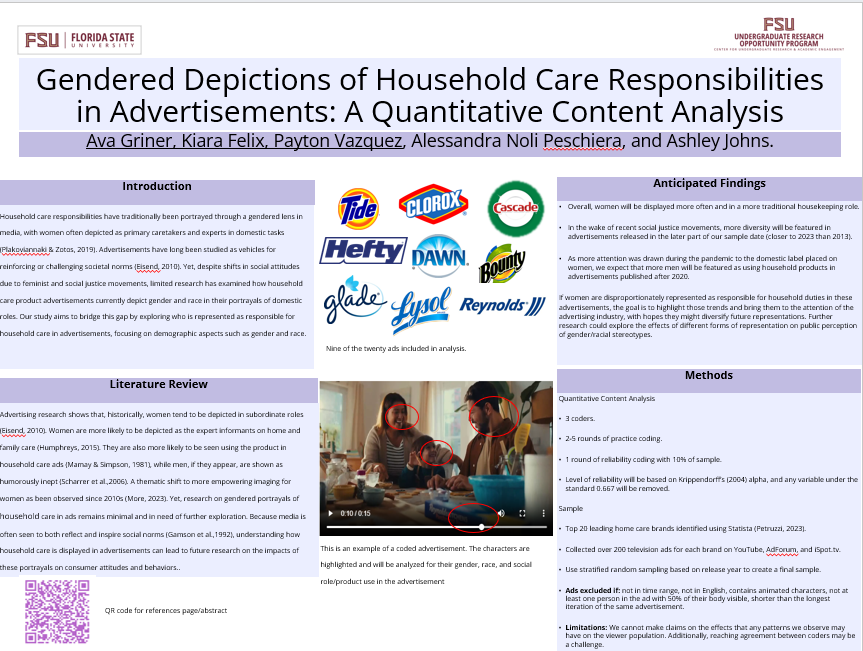Research Symposium
25th annual Undergraduate Research Symposium, April 1, 2025
Kiara Felix Poster Session 3: 1:45 pm - 2:45 pm / Poster #242

BIO
My name is Kiara Catherine Felix, and I am a first-year student at Florida State University, double majoring in media communications studies and criminology. I am from West Palm Beach Florida. My research interests lie at the intersection of media, law, and criminal justice. I am excited to engage with others at the symposium and share my research.
Gendered Depictions of Household Care Responsibilities in Advertisements: A Quantitative Content Analysis
Authors: Kiara Felix, Alessandra Noli PeschieraStudent Major: Communications, Crimionolgy
Mentor: Alessandra Noli Peschiera
Mentor's Department: Center for Hispanic Marketing Communication Mentor's College: College of Communication & Information Co-Presenters: Ava Griner and Payton Vazquez
Abstract
Social learning theory and social cognitive theory both state that human behavior is greatly impacted by the representation of behaviors around them. The purpose of this study is to determine the representation of and expectations for behavior of demographic groups such as gender and race in household cleaning product advertisements. Quantitative content analyses are commonly used to determine the general distribution of characteristics across a set of media. Here, demographic based role assignment bias in cleaning product advertisements was measured using such an analysis. A reliable test was first built by a group of three coders through four rounds of practice coding and one round of reliability coding. Then, the advertisements to be featured in the final data analysis were coded and subsequently assessed to determine broader patterns. Bias in these advertisements has the potential to shape viewer’s expectations of individuals that fall into those demographics, thus pushing certain people into homemaker roles. There is a history in the United States of expecting women to be homemakers, and household product advertisements of the recent past consistently placed women characters into homemaker roles. It is necessary, then, to determine whether this pattern still exists, or if modern social justice movements have encouraged advertisement companies to produce a more diverse cast of characters, thus diversifying thought among viewers. Once the distribution of cleaning product advertisements is determined, it would be reasonable to pursue other forms of media, such as television and movies to truly understand the media atmosphere shaping American minds.
Keywords: gender, advertisements, quantitative content analysis


